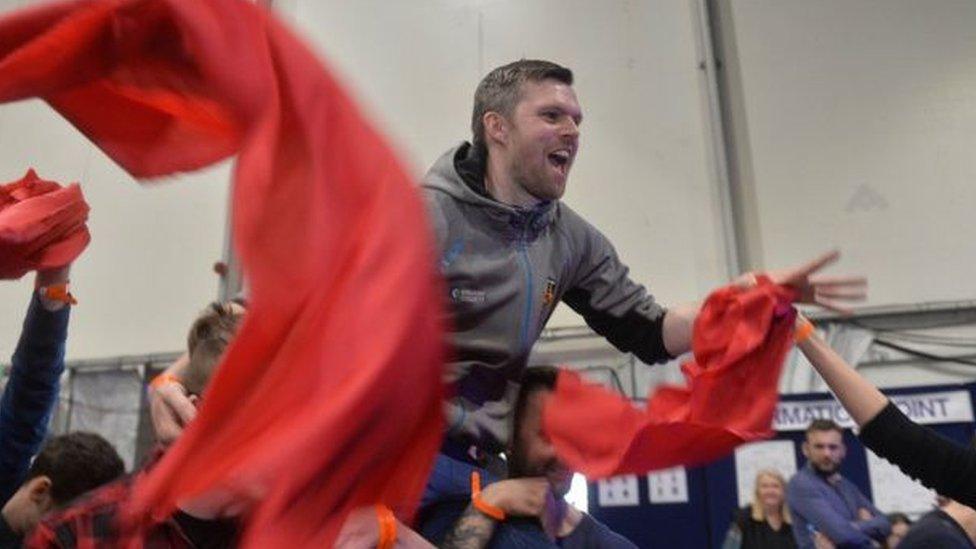NI Assembly election reflection
- Published
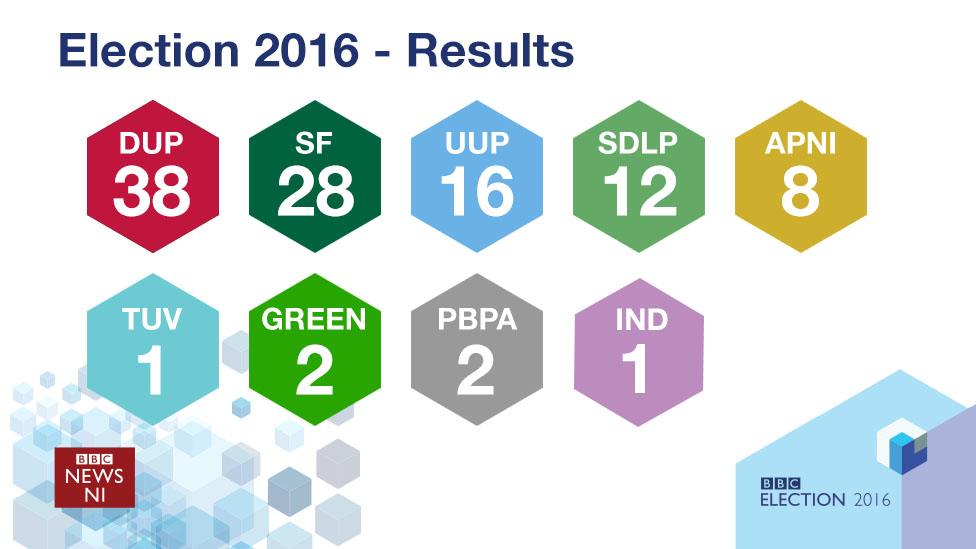
The Democratic Unionist Party remains the largest in Northern Ireland after all 108 seats in the assembly were filled
STV election counts in Northern Ireland feel a bit like a ride on a big dipper.
One day politicians are cresting peaks and plummeting into troughs.
But the next, as the end approaches, the ups and downs smooth out and the riders finish their journey, badly shaken up, but perhaps not so very far away from where they started.
Despite the drama of DUP gains in South Belfast and UUP gains in Lagan Valley, within unionism we have ended up exactly where we were in 2011, with the DUP on 38 seats and the Ulster Unionists on 16.

Gerry Carroll celebrates after his election to the West Belfast constituency
On the nationalist side, however, there has been slippage, with both the SDLP and Sinn Féin losing seats.
The winners were the new kids on the block, the anti-austerity People Before Profit, and the Greens, both of whom will give a new flavour to the Stormont Chamber's so called "naughty corner".
NI Assembly election: The full results
Anti-austerity party picks up seats
Pictures from the counts across Northern Ireland
There were times when the SDLP looked like they might fall below the threshold for the power sharing coalition.
That threshold has increased due to the reduction in the number of Stormont departments.
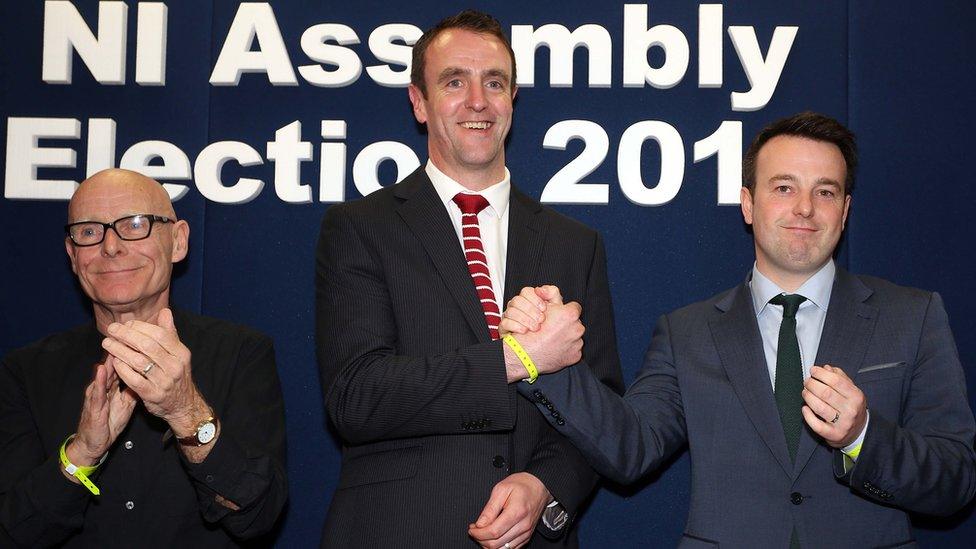
Eamonn McCann, People Before Profit, Mark H Durkan and Colum Eastwood of the SDLP, were returned to Foyle
But by clinging on in places like West Belfast and East Londonderry and taking a seat from Sinn Féin in Fermanagh South Tyrone, Colum Eastwood's team is still 12 strong.
That's two down on 2011, but still enough to qualify for a Stormont ministry, should the new leader decide he wants to join the Executive (which remains open to question).
Sinn Féin knew privately that they were never going to replace the DUP as the biggest party, despite all the speculation during the campaign.
However they must be disappointed not to reach the 30 mark which would have enabled them to launch their own petitions of concern.
Instead, with 28 MLAs, they are one down on 2011, and will be rueing self-inflicted wounds like running too many candidates in Fermanagh South Tyrone.
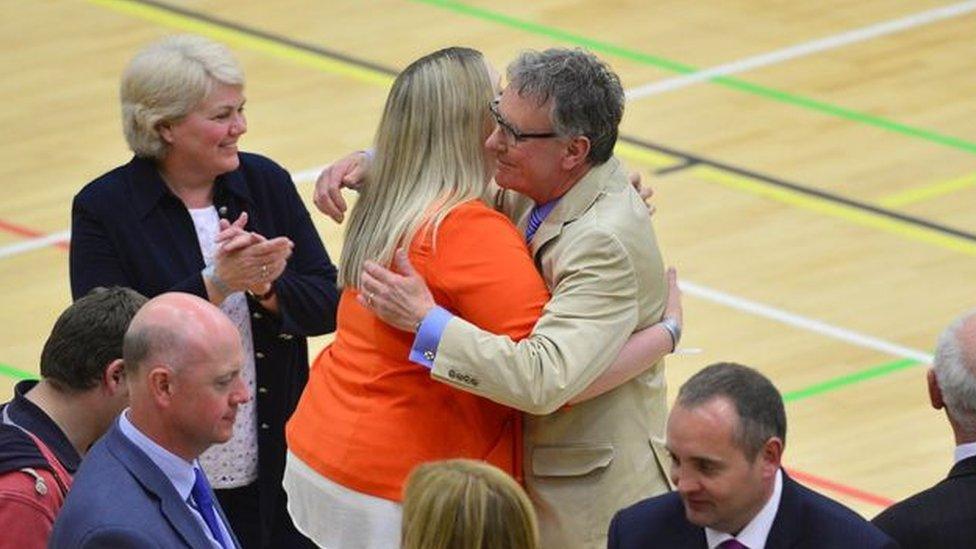
Ulster Unionist leader Mike Nesbitt said returning 16 Assembly seats for his party "is not a success"
Whilst the broad headline so far as unionism is concerned is "no change", that conceals a lot of drama.
Last year, when Mike Nesbitt pulled his party out of the Executive, it looked as if he might have the DUP on the run.
As the crisis over IRA activity unfolded, Peter Robinson was vilified for adopting his rolling resignation tactic.
It certainly brought Stormont into a degree of disrepute with the public.
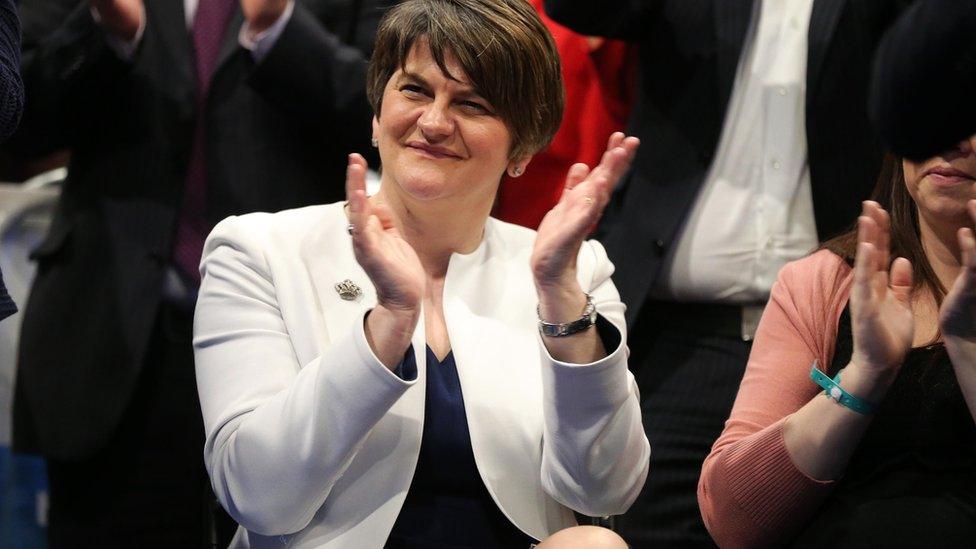
DUP leader Arlene Foster said she was "absolutely delighted with the mandate", after 38 DUP MLAs were elected to Stormont
But it kept the Executive afloat, buying time for the Fresh Start deal and Mr Robinson's hand over to Arlene Foster.
Mrs Foster has reason to feel satisfied not only with her own poll topping performance, but also with halting the UUP's sense of momentum.
Mr Nesbitt will be depressed he didn't achieve his own 18/19 seat "sealed envelope" prediction.
But at least he is returning to Stormont with a team just as strong as the one elected in 2011 (which he may hope will be less susceptible to defections).
If all the parties entitled to a department participate, the new power sharing coalition will include a DUP First Minister, a Sinn Féin Deputy First Minister and a Justice Minister elected on a cross community basis (probably an Alliance MLA).
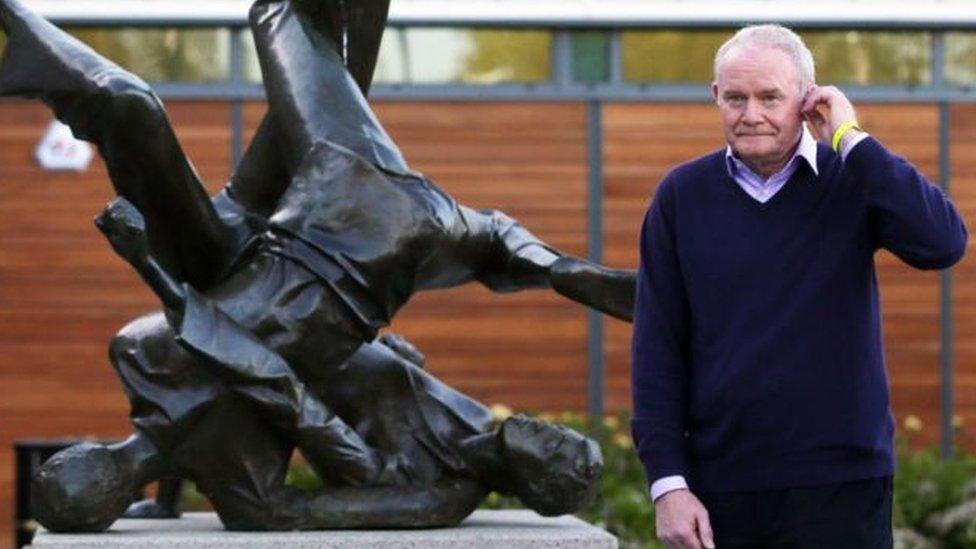
Sinn Féin's Martin McGuinness topped the poll in his home constituency of Foyle
Then the DUP will have three ministries, Sinn Féin two and the Ulster Unionists and SDLP one each.
What we don't know at this stage is who our new ministers will be and, for example, whether a unionist might take the education department.
The 2011 Assembly consisted of 56 unionists, 43 nationalists and nine others.
The new one still has 56 unionists, but now there are only 40 nationalists, whilst the others will increase to 12.
That may prove significant in some circumstances, but if nationalists feel strongly about an issue they can still protect their position by using their cross community voting veto.
The new MLAs will move into their offices in Parliament Buildings from Monday onwards.
We expect the election of a new Speaker to replace Mitchel McLaughlin soon (probably on Thursday 12th May), but the timetable for the election or appointment of new ministers will depend on how the planned negotiations on a Programme for Government unfold.
- Published7 May 2016
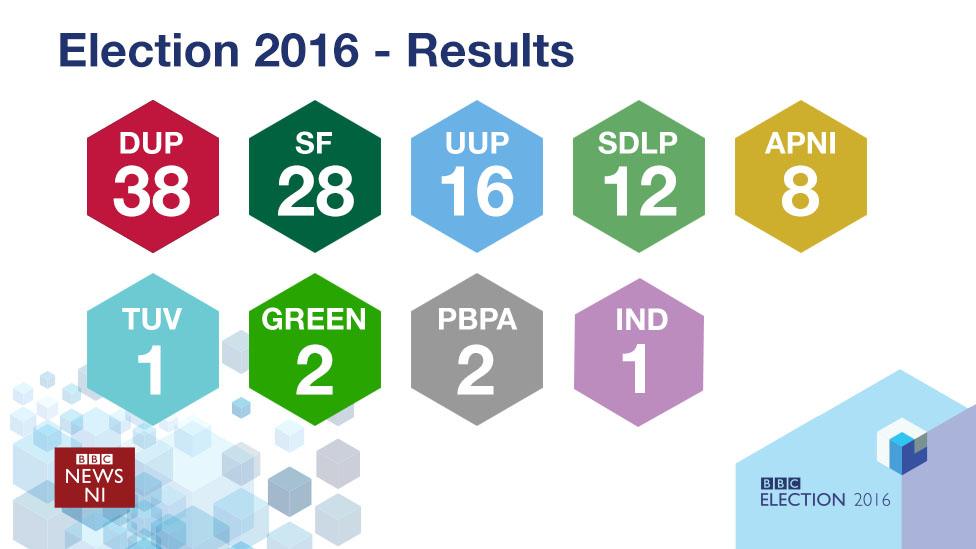
- Published7 May 2016
